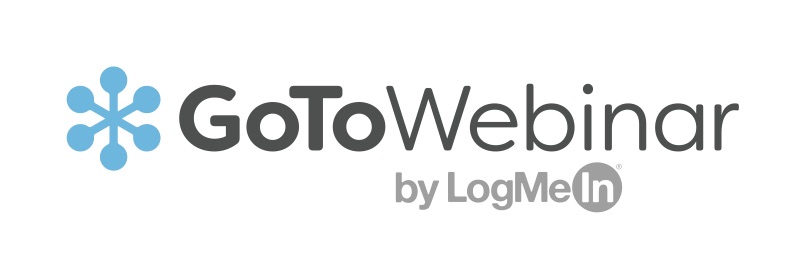Brands with consistent branding expect to earn up to 20% more annual revenue on average than the brands that are inconsistent. But building a brand strategy can feel overwhelming. That's where strategist Lindsay Pedersen comes in.
Don't miss a MarketingProfs podcast, subscribe to our free newsletter!
Her company, Ironclad Brand Strategy, helps companies build the kind of brand that "differentiates your business in an enduring way." Products can become commoditized, but a strong brand relationship earns customers' loyalty, says Pedersen: "Ironclad brands occupy the single best position in the hearts and minds of their customers."
I invited Lindsay to Marketing Smarts to share the nine criteria for an ironclad brand strategy (and other insights) from her new book, Forging an Ironclad Brand: A Leader's Guide. Here are a few highlights from our conversation:
Building a brand strategy is like puzzle-making: It starts off as a slow process, but things move pretty fast once pieces start falling into place(02:23): "The sensation of creating a brand strategy for me feels like the same sensation as putting together a jigsaw puzzle with my kids. It starts out like 'holy smokes, there's so much here and it's so disparate,' and then patterns start to emerge. And then, almost magically, at least with me, it just goes really fast. So it's kind of slow, like molasses, wading your way through, and then oh: a few sparks and ahas happen, and then those sparks and ahas start to happen in quicker succession.
"For a really large brand, where there's massive amounts of data, that [process] is over the course of many months. If it's a smaller business and we don't have as much data, that same thing happens, but it might be over the course of just a few weeks."
Don't focus so much on B2B vs. B2C—every brand that serves humans can build an ironclad brand strategy (08:26): "The idea of brand as a universal value creator, whether it's B2B or B2C, whether it's a small company or a large company—I believe in that vehemently. Part of the reason is that it comes back to "what even is a brand?" A brand is a relationship between the business and the human being that this business serves.
"In some ways, the Starbucks consumer and the Clorox consumer are really different, but they're both human beings. And actually, we human beings have a whole lot in common. In some ways, we overstate the difference in the way that various business types and stages relate to people. Because as long as [a brand] is serving a human being, there's more that these things have in common than sets them apart."
Your brand promise should be both big and narrow (11:00): "The promise that your business brings to your customer needs to be a big and resonant one. It shouldn't be a small one. It needs to be big enough that it allows your business goals to unfold. So you don't want to promise something small that the customer doesn't care all that much about. You want it to be big.
"Say it's Starbucks: They're not just bringing you your hit of caffeine for the day. That would be smaller. They're giving you this endorphin boost of interpersonal connectedness and a small moment of joy to start your day. That's big. So it has to be big enough to matter.
"But it also needs to be narrow enough that your business has a unique way of delivering on that big promise. When it's big but it’s not specific to you as a business, you might be creating demand for the category, but you're not specifically creating demand for your business if it's not something that you uniquely own."
An ironclad brand is "asymmetrical" because you play to your strengths (15:46): "I think about brand as the brand strategy is almost synonymous with your business strategy. Actually, don't even think about business strategy, just think about what strategy even means in other contexts. It's all about identifying precisely your strength that is dramatically disproportionate to others'.
"So sometimes you have an asymmetrical strength that, if it's military, maybe it's that you have more people who can fight. Sometimes, for a business, your asymmetrical or lopsided advantage is that you're the first-mover. Sometimes it's that you're loved by the Kardashians who will promote your brand.
"It's all about zeroing in on the specific. Some people call it an 'unfair advantage.' When you bring that into your promise, it helps you to be narrow and it gives you the competitive moat, because if you're starting from this place of where you can uniquely and sizeably out-deliver on anybody else, you're building from your own strength."
To learn more, visit IroncladBrandStrategy.com. You can also follow Lindsay on Twitter at @lindsaycpederse, and be sure to pick up a copy of Forging an Ironclad Brand: A Leader's Guide.
Lindsay and I talked about much more, so be sure to listen to the entire show, which you can do above, or download the mp3 and listen at your convenience. Of course, you can also subscribe to the Marketing Smarts podcast in iTunes or via RSS and never miss an episode!
This episode brought to you by GoToWebinar:
GoTo Webinar makes it easy to produce engaging online events. Whether you want to connect with your prospects, customers or employees, GoTo Webinar has the tools and analytics you need. Start creating interactive and educational webinars your audience will love.
Music credit: Noam Weinstein.
...sign up for free to continue reading
Don't miss a MarketingProfs podcast, subscribe to our free newsletter!
Published on October 10, 2019





 Lindsay Pedersen, brand strategist and owner at
Lindsay Pedersen, brand strategist and owner at 
